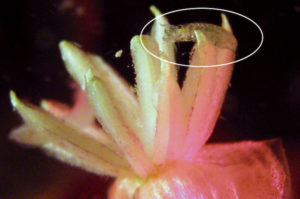Pollination. I think most people understand why this is important (or maybe I should say, I hope). To put it simply, the process of pollination facilitates reproduction in plants by transferring pollen from one plant to another. In the terrestrial world, this can be mediated by physical forcing (e.g., wind) or by animals (e.g., insects) – and its why people are freaking out about the loss of bees due to pesticides (because they are a primary pollinator), but I digress. Until relatively recently, pollination by animals was not thought to occur in the ocean. Unlike on land, where most flowering plants rely on creatures to carry pollen, plant reproduction in an aquatic world was surmised to rely exclusively on currents and tides. However, a team of researchers led by marine biologist Brigitta van Tussenbroek revoked the long standing paradigm that pollen in the sea is transported only by water, discovering and documenting the process of zoobenthophilous pollination (a term they coined).

flower of the seagrass Thalassia testudinum at night. (Photo credit: Tussenbroek et al. 2012)
Read More “Fun Science FRIEDay – Underwater World of Pollination” »
